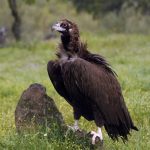Have you ever wondered whether birds experience fatigue or exhaustion from flying? It’s a common perception that birds have an unlimited flying ability and can fly for days without rest. However, scientific studies suggest otherwise.
Researchers have examined the physiology and behavior of birds during flight to understand their endurance and flying capabilities. They have found that, like humans, birds can experience fatigue and exhaustion from prolonged activity, including flying.
In this article, we’ll explore the truth about bird fatigue and avian exhaustion. We’ll examine the factors that influence bird flight endurance, the phenomenon of bird migration, and the challenges of studying bird fatigue. By the end of this article, you’ll have a clear answer to the question: do birds get tired of flying?
Key Takeaways:
- Scientific studies suggest that birds can experience fatigue and exhaustion from prolonged activity, including flying.
- Factors that influence bird flight endurance include their energy expenditure, physiological adaptations, and migration patterns.
- The phenomenon of bird migration involves a variety of strategies, and some bird species are capable of flying continuously for extended periods.
- The challenges of studying bird fatigue include the complex physiology and behavior of birds during flight.
- Interesting and lesser-known facts about birds and their flight capabilities highlight unique bird species with extraordinary flight abilities and provide insights into their endurance and resilience.
Understanding Bird Flight Endurance
Birds are remarkable creatures that can fly for long periods without seeming to tire. Their flight endurance is influenced by several factors, including bird flight stamina, energy expenditure, and physiological adaptations, among others.
Bird flight stamina refers to the ability of birds to sustain flight for extended periods. This stamina is influenced by factors such as bird energy expenditure, which is the amount of energy the bird uses during flight. Birds use energy for a variety of activities, including flapping their wings, maintaining altitude, and searching for food. The amount of energy they expend is influenced by factors such as their body size, body mass, and wing shape and size, among others.
Birds have evolved several physiological adaptations to conserve energy during flight. For instance, during long flights, birds reduce their heart rates and blood pressure. They also use a technique called soaring, where they use rising air currents to fly without flapping their wings. Additionally, birds adjust their flight speed and altitude to take advantage of wind conditions, which can help reduce the amount of energy they use.
Several factors can affect bird flight endurance, and one of them is migration patterns. Birds undertake long-distance migrations that can span thousands of miles. During this journey, they face several challenges, such as crossing large bodies of water and avoiding predators. To conserve energy during migration, birds use several flying strategies, including gliding and soaring.
Another factor that affects bird flight endurance is wing muscle fatigue. Birds’ wings are made up of muscles that can become fatigued over time, much like human muscles. When this happens, birds may experience reduced flight speed and endurance. However, birds have evolved several strategies to counter this fatigue, such as alternating their wing beats and using different muscle groups.
Factors Affecting Bird Flight Endurance
Several factors can affect bird flight endurance. Some of the most important ones include:
- Bird flight stamina
- Bird energy expenditure
- Physiological adaptations
- Migration patterns
- Wing muscle fatigue
Understanding these factors is crucial to understanding birds’ flight capabilities and endurance. By studying them, scientists can gain valuable insights into how birds navigate and survive in their environments, even in the face of avian exhaustion.
Do Birds Rest While Flying?
Migration is an impressive phenomenon that allows birds to travel long distances to reach their breeding or wintering grounds. But do birds rest while flying? Scientists have studied bird migration patterns to explore this interesting question.
Research shows that some bird species do rest while flying, but not in the traditional sense. Birds, especially those with high flying endurance, tend to take short naps mid-flight to conserve energy. They have the unique ability to sleep with one half of their brain while the other half remains alert to avoid collisions with other birds or obstacles.
Other species, such as the Alpine Swift, can fly continuously for months without landing. These species have adapted to have larger heart muscles that enable them to extract more oxygen from each breath, allowing them to efficiently maintain flight for extended periods.
In general, the migrating behaviors of birds demonstrate their incredible endurance and resilience in the face of rigorous exercise. Whether they take naps mid-flight or fly continuously for months, they have adapted to their unique environments to ensure their survival.
Scientific Studies on Bird Fatigue
Studying bird fatigue is a challenging task for researchers. One reason is that birds are highly mobile and challenging to track. Another reason is that measuring the fatigue level of a bird in flight is no easy feat.
However, a few scientific studies have shed some light on bird fatigue and wing muscle fatigue. One study published in the Journal of Experimental Biology found that birds can suffer from fatigue-induced muscle damage during long-term flights. The study also found that birds in flight undergo changes in muscle activity to conserve energy.
Another study published in the Journal of Comparative Physiology A drew similar conclusions. The research found that birds’ wing muscles are susceptible to fatigue, but they are also capable of quick recovery compared to mammalian muscles.
While these studies offer some insights into bird fatigue, more research is needed to fully understand the physiological processes that enable birds to fly for extended periods without experiencing exhaustion.
Fascinating Bird Facts
Birds are undoubtedly one of the most fascinating creatures on earth, with their amazing flight capabilities and unique behaviors. Here are some interesting facts about birds and their flight endurance that you may not know:
- Birds have been known to fly for days, weeks, or even months without stopping. For instance, the common swift can stay in the air for up to 10 months without landing!
- Some bird species, such as the bar-tailed godwit, fly non-stop for thousands of miles during their migration, covering distances as long as 7,000 miles!
- Birds have special adaptations that allow them to conserve energy during flight, such as the ability to change their wing shape and size and reduce their heart rate.
- Studies have shown that birds can deal with avian exhaustion by taking power naps while flying. During these naps, one half of their brain remains active while the other half sleeps.
- Scientists have discovered that certain bird species have evolved to fly at very high altitudes where the air is thinner and there is less drag. For example, bar-headed geese have been found to fly over the Himalayas at altitudes above 20,000 feet!
These fascinating bird facts reveal the incredible endurance and resilience of these amazing creatures, which have evolved to adapt to different flight conditions and overcome the challenges of avian exhaustion.
Conclusion
In conclusion, birds do not get tired from flying in the same way humans do. Despite their small size, birds have incredible endurance and can fly continuously for days or even weeks without rest. The factors that influence bird flight endurance include energy expenditure, physiological adaptations, and migration patterns. When birds migrate, they employ different strategies and do not rest mid-flight.
Scientific studies on bird fatigue have shown that the wing muscles of birds do experience fatigue, but their flight abilities are not significantly impacted. This is due to the unique adaptations of bird wings, which allow them to maximize their flight efficiency and conserve energy.
Despite the challenges of studying bird fatigue, scientists continue to gain new insights into the flight capabilities of birds. Through their research, we have learned about the remarkable abilities of certain bird species and their resilience in the face of avian exhaustion.
Overall, the study of bird flight is both fascinating and important. It provides insights into the natural world and helps us understand more about the complex adaptations and abilities of birds. So next time you spot a bird soaring high in the sky, take a moment to appreciate the incredible flight capabilities of these amazing creatures.
FAQ
Q: Do birds get tired of flying?
A: While birds do experience fatigue, they have developed various mechanisms to cope with long flights and conserve energy. Some bird species can fly for extended periods without resting.
Q: What factors affect bird flight endurance?
A: Bird flight endurance is influenced by factors such as energy expenditure, migration patterns, and wing muscle fatigue. Birds have adapted physiological mechanisms to conserve energy during flights.
Q: Do birds rest while flying?
A: Birds employ different strategies during migration, and some species are known to take breaks or rest mid-flight. However, certain bird species can fly continuously for extended periods without resting.
Q: What do scientific studies say about bird fatigue?
A: Scientific studies have examined bird fatigue and wing muscle fatigue. Researchers face challenges in studying bird fatigue, but studies have revealed insights into the muscle fatigue experienced by bird wings.
Q: What are some fascinating bird facts?
A: Birds possess remarkable flight capabilities, with certain species displaying extraordinary endurance and resilience against avian exhaustion. Their unique migration patterns and flight abilities make them fascinating creatures to study.







